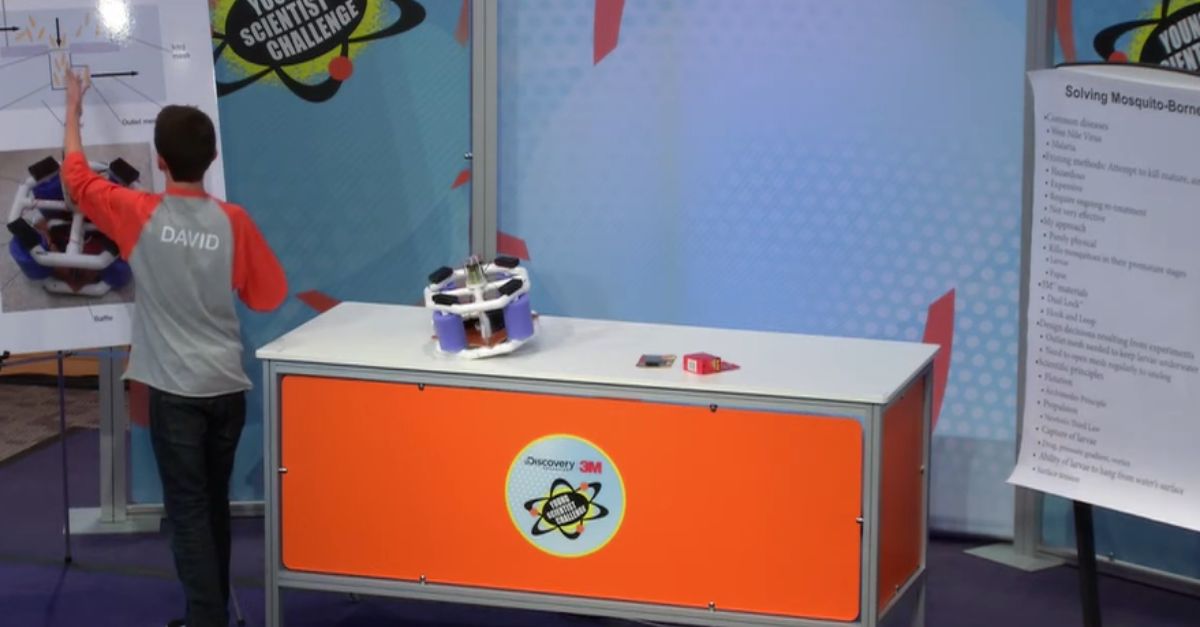Building Dreams Into Reality
Age is just a number in the world of discovery. After all, some of history's most impactful discoveries came from curious kids who dared to think differently. Their unstoppable creativity brought about the following inventions.
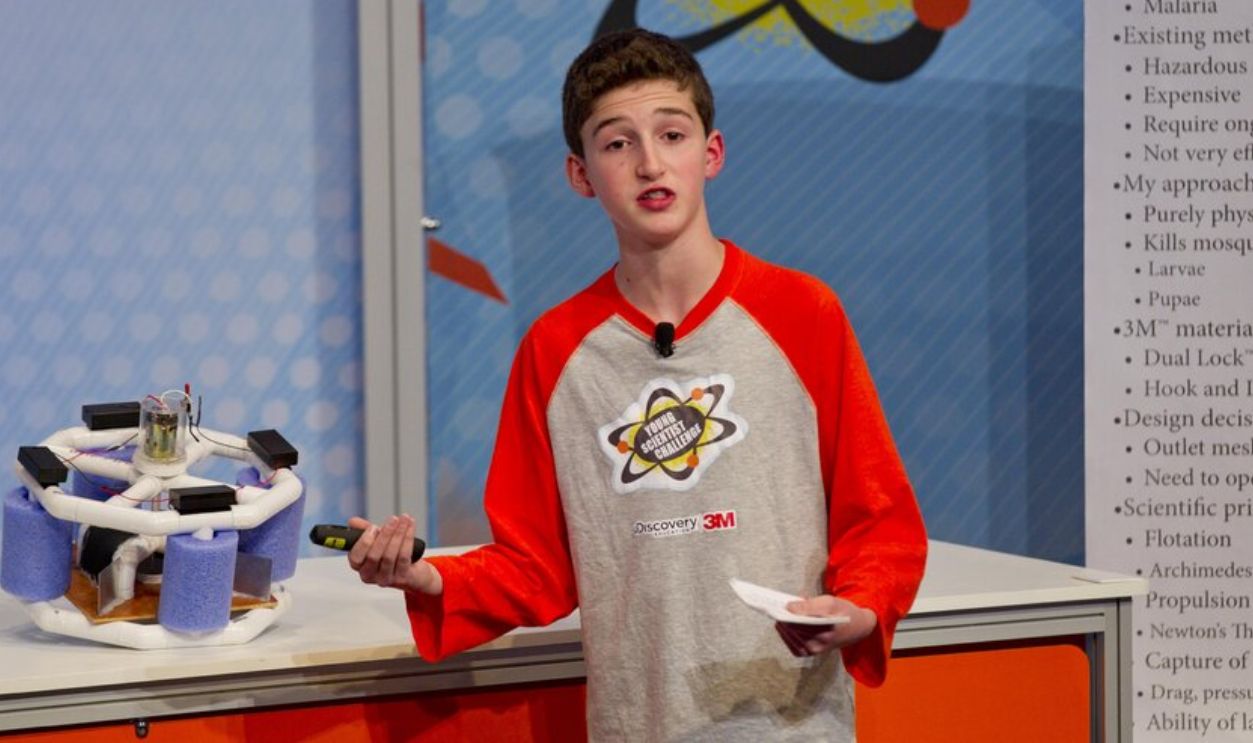
Braille Reading And Writing System
Before Louis Braille's brilliant invention in 1824, blind people struggled with a painfully slow reading method that involved tracing raised letters with their fingers. At just 15, Braille changed this experience by creating a six-dot system that was remarkably simple yet revolutionary.
 Ralph Aichinger, CC BY 2.0, Wikimedia Commons
Ralph Aichinger, CC BY 2.0, Wikimedia Commons
Braille Reading And Writing System (Cont.)
His invention was ingenious because it improved upon a military code called "night writing," which used 12 dots. Users read Braille by moving their fingers over the raised dots from left to right using their index fingers. The first published version appeared in 1829.
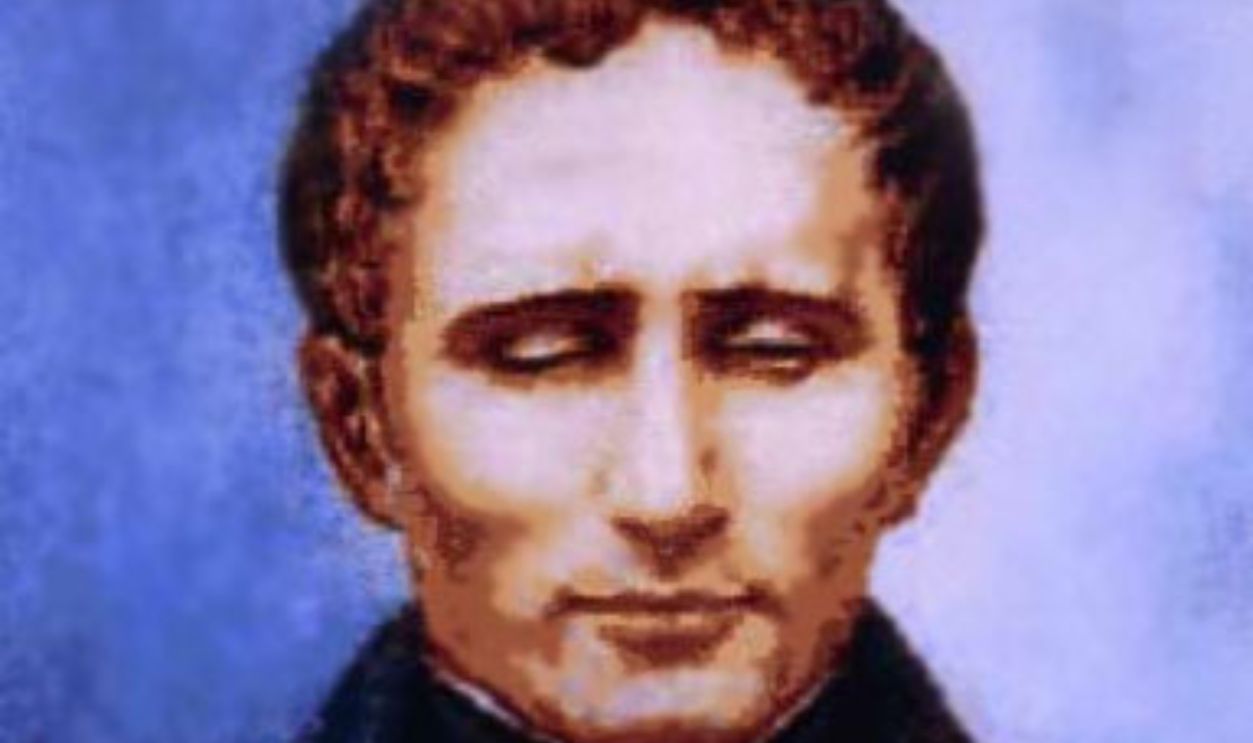 Unknown Author, Wikimedia Commons
Unknown Author, Wikimedia Commons
Adjustable Spring Steel Earmuffs
The bitter Maine winters of 1873 brought a moment of teenage ingenuity that would warm ears for generations to come. Chester Greenwood's extremely sensitive ears prevented him from enjoying ice skating until he had a breakthrough at age 13. It had an innovative spring-steel band.
Adjustable Spring Steel Earmuffs (Cont.)
This could adjust to different head sizes while maintaining consistent pressure. Using a combination of beaver fur and black velvet, Greenwood made his "Champion Ear Protector" with a v-shaped steel band that could be flattened for storage without losing tension.
 Toglenn, CC BY-SA 4.0, Wikimedia Commons
Toglenn, CC BY-SA 4.0, Wikimedia Commons
First Frozen Popsicle Treat
On a San Francisco night in 1905, an ordinary cup of soda mixture left on a porch led to one of the most beloved frozen treats in history. Eleven-year-old Frank Epperson had accidentally left his powdered soda, water, and stirring stick outside overnight.
First Frozen Popsicle Treat (Cont.)
Rather than seeing a frozen mistake the next morning, young Epperson recognized an opportunity. Initially selling his creation as "Eppsicles" at local events and amusement parks, he later patented his invention in 1924 under the name “Popsicles”. His children inspired this name, calling it “Pop's sicles”.
Propeller–Driven Snowmobile
The evolution of winter transport took an unexpected turn in rural Quebec when a simple test drive through deep snow revealed the fatal flaw in regular vehicles. For Joseph-Armand Bombardier, who was just 17 years old in 1926, this observation gave rise to a series of experiments.
 Daderot, CC0, Wikimedia Commons
Daderot, CC0, Wikimedia Commons
Propeller–Driven Snowmobile (Cont.)
Rather than modify existing vehicles, he reimagined transportation from scratch and combined a propeller's thrust with the gliding ability of skis. His drive system finally solved the problem of sinking in deep snow. This boy also tested it in various winter conditions around his village.
 Daderot, CC0, Wikimedia Commons
Daderot, CC0, Wikimedia Commons

History's most fascinating stories and darkest secrets, delivered to your inbox daily.
Electronic Television System
By the time he was just 15, this young inventor amazed everyone. Young Philo T. Farnsworth had a superb idea about sending images by breaking them down into lines. This turned a bunch of theories into something you could actually use.
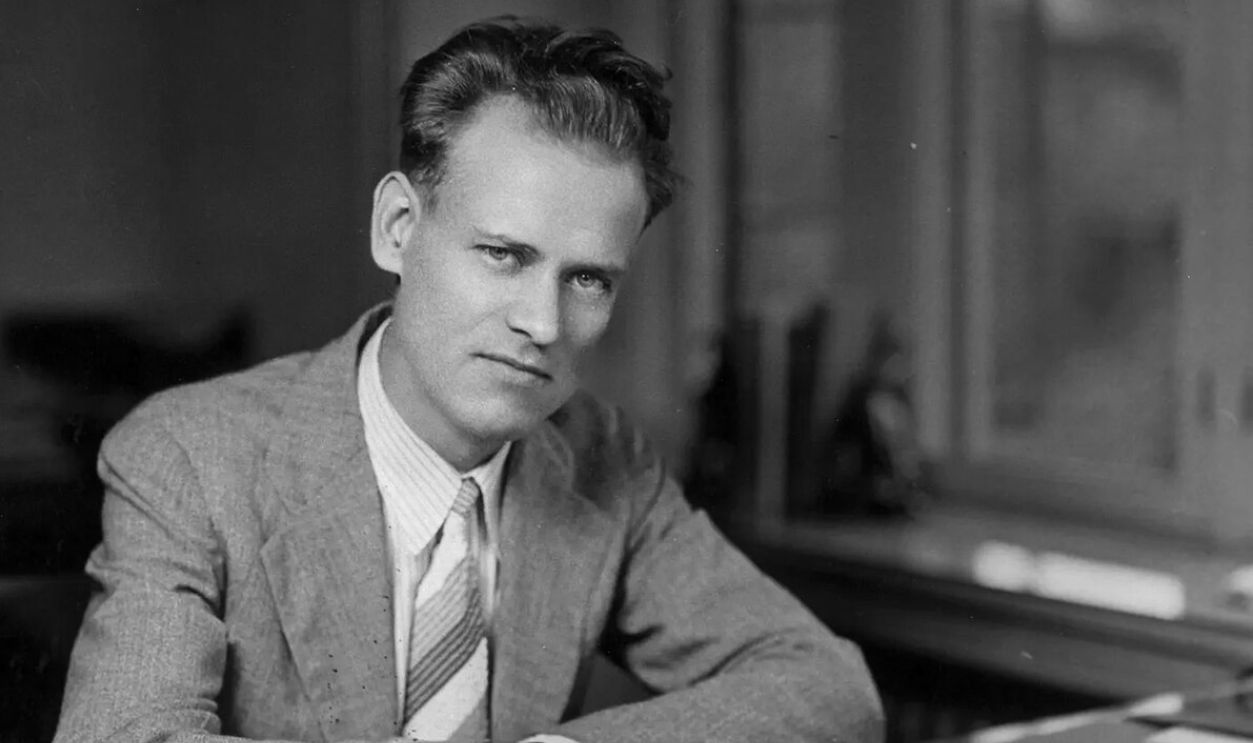 PSchatzkin, CC0, Wikimedia Commons
PSchatzkin, CC0, Wikimedia Commons
Electronic Television System (Cont.)
He successfully transmitted the first image with his electronic TV system and didn’t need any moving parts. Farnsworth demonstrated his electronic television to reporters at his San Francisco laboratory in September 1927. Its patents included scanning, focusing, synchronizing, contrast, controls, and power.
Modern Recreational Trampoline
At just 16 years old in 1930, George Nissen began his journey to invent the modern recreational trampoline after being inspired by trapeze artists at a circus. Observing how these performers would bounce off safety nets, he envisioned a device that could allow continuous bouncing.
 Robertcsjodin, Avero AB, CC BY-SA 3.0, Wikimedia Commons
Robertcsjodin, Avero AB, CC BY-SA 3.0, Wikimedia Commons
Modern Recreational Trampoline (Cont.)
So, he worked with his gymnastics coach, Larry Griswold, and experimented with different materials and designs. Nissen and Griswold created a prototype using a canvas sheet stretched over a steel frame, initially employing inner tubes for bounce tension.
 zeevveez from Jerusalem, Israel, CC BY 2.0, Wikimedia Commons
zeevveez from Jerusalem, Israel, CC BY 2.0, Wikimedia Commons
Modern Recreational Trampoline (Cont.)
This design evolved into a more sophisticated trampoline that balanced strength and flexibility. In 1945, Nissen received a patent for his “Tumbling Device,” which he later trademarked as a “trampoline”. It reflects the device's intended use for bouncing and acrobatics.
Makin Bacon Microwave Stand
When Abbey Fleck (8) questioned the need for paper towels in microwave bacon cooking, she opened an entirely new approach to the process. Her device uplifted strips of bacon on a specialized stand that would let gravity naturally separate the meat from its grease.
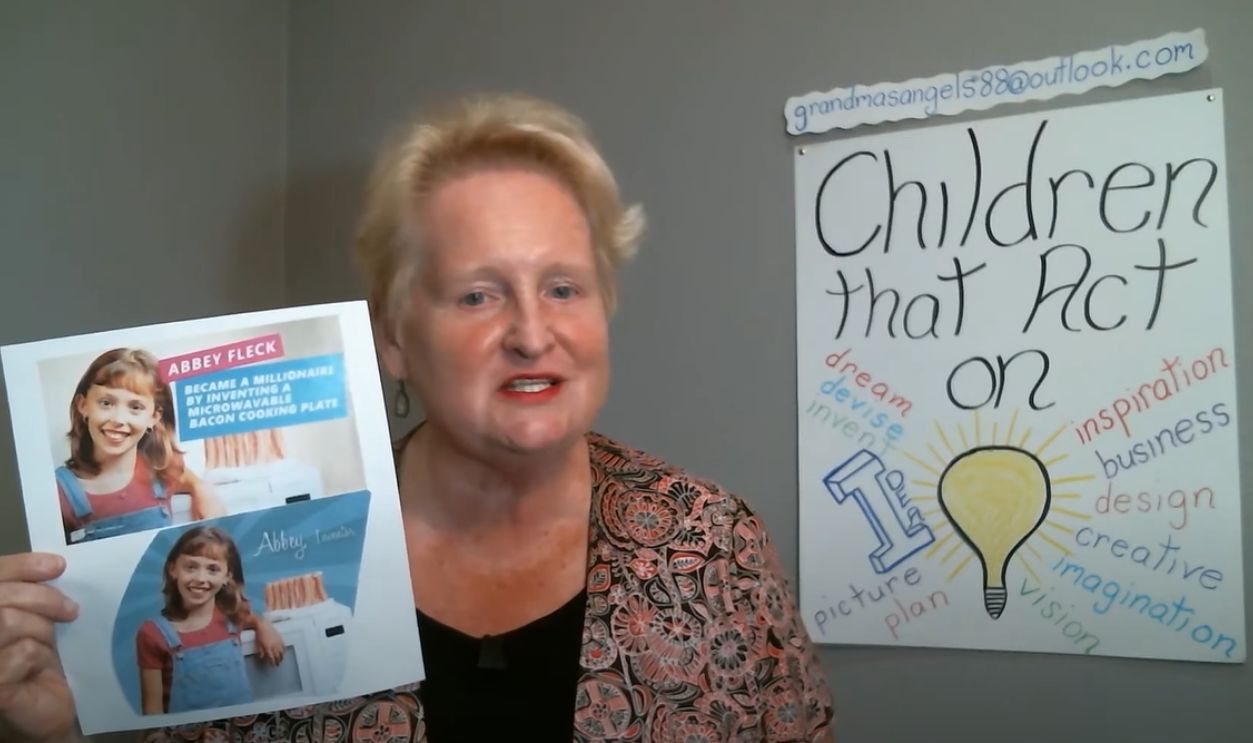 CHILDREN THAT ACT ON THEIR IDEAS… by Grandma's Angel's
CHILDREN THAT ACT ON THEIR IDEAS… by Grandma's Angel's
Makin Bacon Microwave Stand (Cont.)
Abbey and her father founded A. de F. Ltd. to manufacture and market the product, which gained attention and sales after endorsements from Good Housekeeping and appearances on popular television shows like The Oprah Winfrey Show. In 1993, they secured a US patent for their invention.
 Testing 3 Microwave Bacon Cookers! by Freakin' Reviews
Testing 3 Microwave Bacon Cookers! by Freakin' Reviews
Reconfigurable Toy Truck
In 1963, the US Patent Office made history by awarding rights to Robert Patch, a six-year-old inventor. Patch created his prototype using shoeboxes, bottle caps, and nails. His father recognized the uniqueness of his son's design and filed a patent application in June 1962.
 AlfvanBeem, CC0, Wikimedia Commons
AlfvanBeem, CC0, Wikimedia Commons
Reconfigurable Toy Truck (Cont.)
Because Robert was so young, he signed the patent application with an “X”. The toy truck could be assembled and disassembled easily and converted from one type of truck to another using the same parts. Its chassis comprised a flat bottom.
 Barkave Balusamy, CC BY-SA 4.0, Wikimedia Commons
Barkave Balusamy, CC BY-SA 4.0, Wikimedia Commons
Magnetic Locker Wallpaper
At the age of 14, Sarah Buckel, a Pennsylvania teen, crafted a magnetic locker wallpaper in 2006. With this inventive tool, kids can add vibrant graphics to their lockers while avoiding the mess and damage associated with traditional decorating methods.
 Locker Lookz Wallpaper by A.C. Moore Arts & Crafts
Locker Lookz Wallpaper by A.C. Moore Arts & Crafts
Magnetic Locker Wallpaper (Cont.)
It adheres to metal surfaces using strong magnets, eliminating the need for glue or tape. The sheets can be custom-trimmed to fit all locker sizes. Her father, Paul Buckel, backed her up, using his know-how from working in magnet manufacturing.
 Locker Lookz Wallpaper by A.C. Moore Arts & Crafts
Locker Lookz Wallpaper by A.C. Moore Arts & Crafts
Three Cent Pancreatic Cancer Test
Medical research faced a dramatic shift when a high school student challenged the status quo of cancer detection. After thousands of attempts, Jack Andraka discovered that carbon nanotubes with embedded antibodies could detect cancer-specific proteins.
 Intel Free Press, CC BY-SA 2.0, Wikimedia Commons
Intel Free Press, CC BY-SA 2.0, Wikimedia Commons
Three Cent Pancreatic Cancer Test (Cont.)
Andraka's project consisted of a sensor, similar to diabetic test strips, for early-stage pancreatic cancer screening. The sensor was said to measure the mesothelin level to test for the presence of cancer. He even bagged the prize at the Intel International Science and Engineering Fair in 2012.
 Teenager Wins Top Science Prize for Pancreatic Cancer Test by Voice of America
Teenager Wins Top Science Prize for Pancreatic Cancer Test by Voice of America
SafeWander Alert System
Kenneth Shinozuka was inspired to create a solution for monitoring patients because of his own experience with Alzheimer's disease. When his grandfather started wandering at night, the 15-year-old came up with a smart sock sensor that alerts caregivers when patients get out of bed.
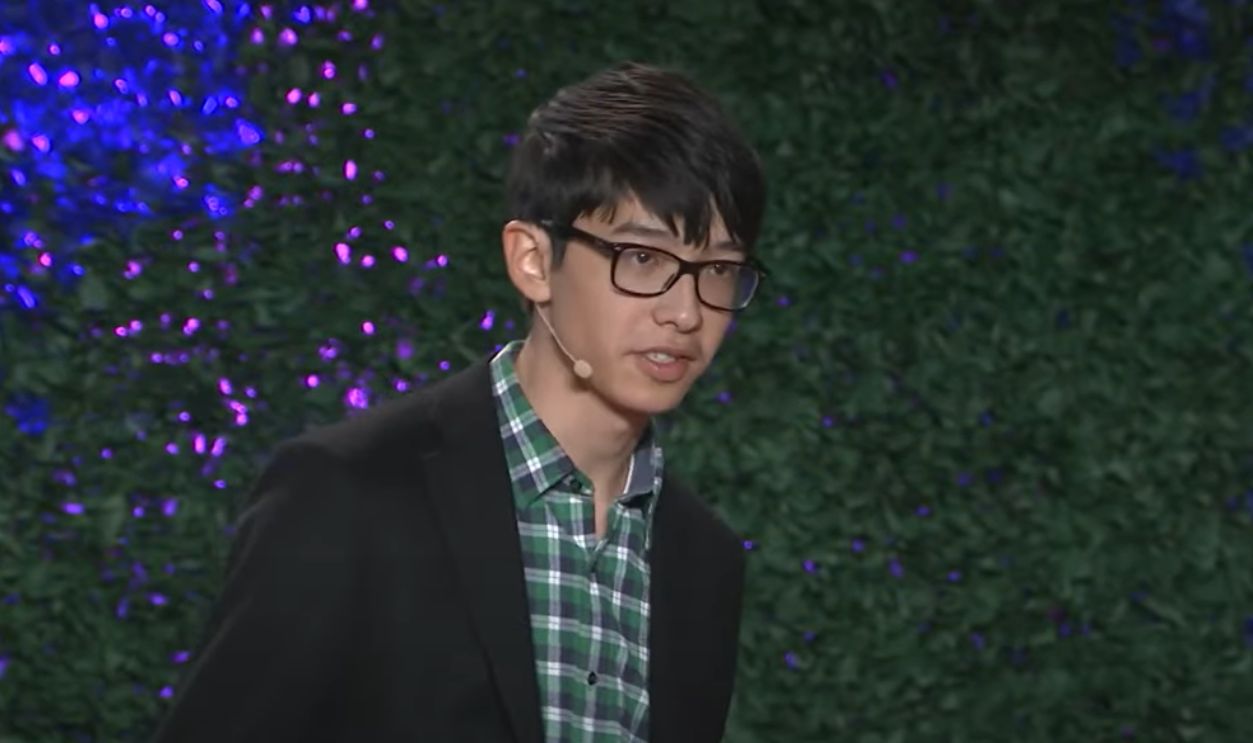 Kenneth Shinozuka: My simple invention, designed to keep my grandfather safe by TED
Kenneth Shinozuka: My simple invention, designed to keep my grandfather safe by TED
SafeWander Alert System (Cont.)
Basically, the SafeWander system includes a pressure sensor that is worn in a sock. When the sensor is activated, it sends an instant alert to a caregiver's smartphone, allowing for timely intervention. He even won the 2014 Google Science Fair, receiving recognition for this approach.
Pascaline Calculator
When 18-year-old Blaise Pascal developed the Pascaline to meet his father's demands as a tax supervisor, mathematical computing underwent a transformation. His mechanical calculator's clever gear and wheel mechanism allowed it to add and subtract six-digit integers.
 David.Monniaux, CC BY-SA 3.0, Wikimedia Commons
David.Monniaux, CC BY-SA 3.0, Wikimedia Commons
Pascaline Calculator (Cont.)
It also propagates multiple carries during calculations. Because when a dial hits nine and needs to carry over, it adds 1 to the following dial effortlessly. In 1649, Pascal received a royal privilege from King Louis XIV, granting him rights to manufacture and sell them in France.
 Marcin Wichary from San Francisco, Calif, CC BY 2.0, Wikimedia Commons
Marcin Wichary from San Francisco, Calif, CC BY 2.0, Wikimedia Commons
Hot Seat Safety Alarm
Alarm bells went off when news reports about kids left in hot cars started flooding in. That's what pushed fourteen-year-old Alissa Chavez to make something useful. She came up with a detection system that uses a special cushion in the car seat linked to your smartphone.
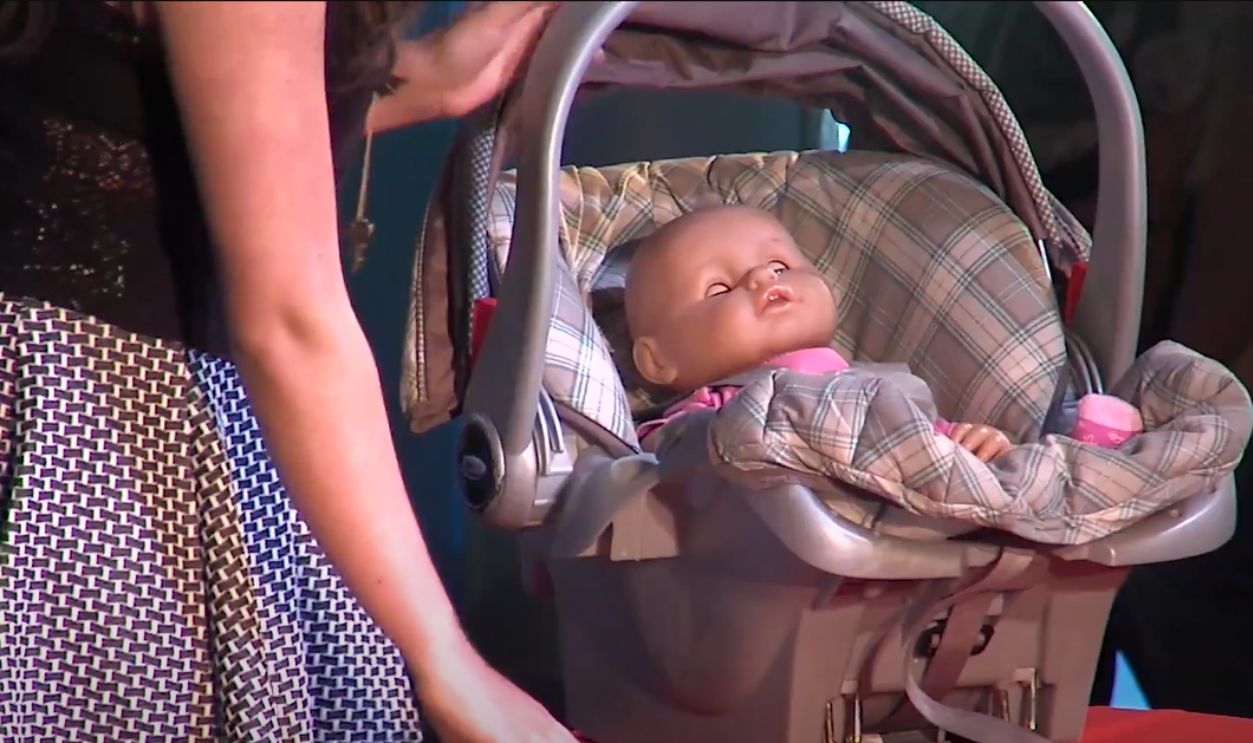 One child too many | Alissa Chavez | TEDxYouth@ABQ by TEDx Talks
One child too many | Alissa Chavez | TEDxYouth@ABQ by TEDx Talks
Hot Seat Safety Alarm (Cont.)
It was designed to help prevent accidents for forgetful parents. The Hot Seat notifies your phone if you walk more than 20 feet away from a car with a child in it. Chavez began developing the Hot Seat as part of her eighth-grade science fair project.
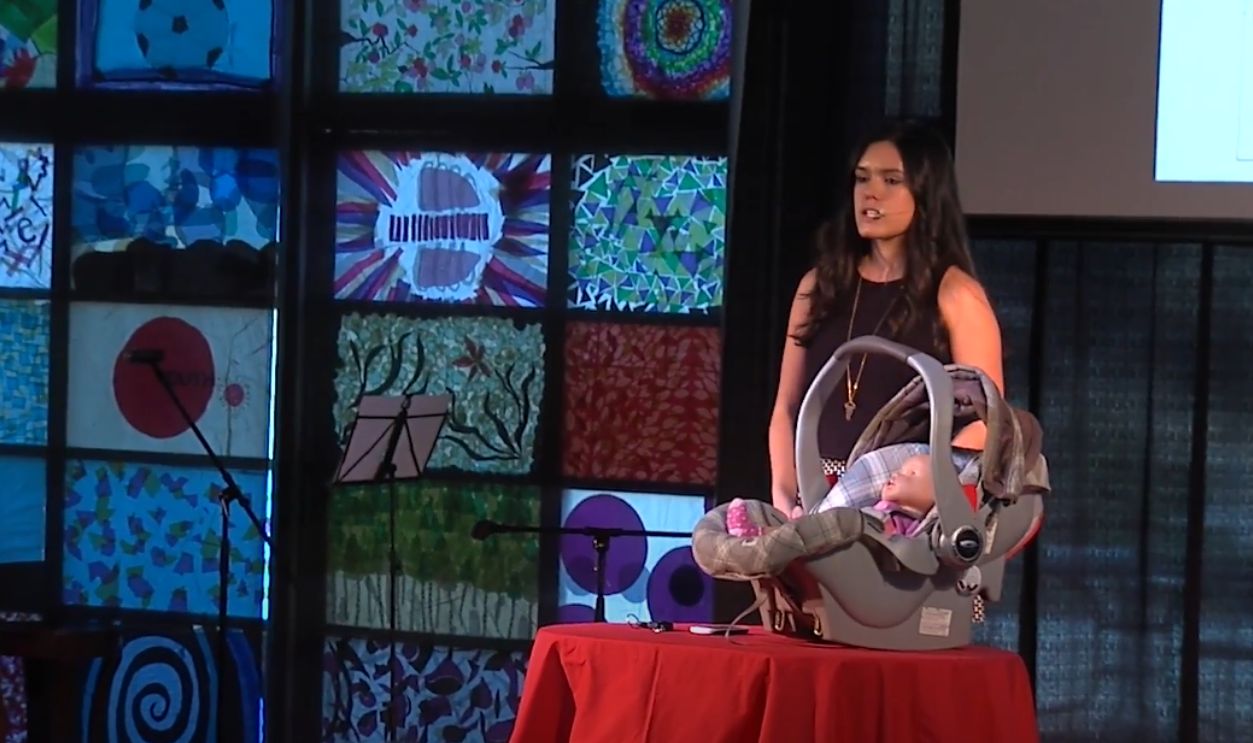 One child too many | Alissa Chavez | TEDxYouth@ABQ by TEDx Talks
One child too many | Alissa Chavez | TEDxYouth@ABQ by TEDx Talks
AssistiveTouch Pro Controller
A single eye movement can now accomplish what once required full physical mobility. By integrating infrared sensors with machine learning algorithms, Ryan Honary's device tracks eye positions with millimeter precision. In addition to this, Honary has also crafted an AI-driven sensor network for early wildfire detection.
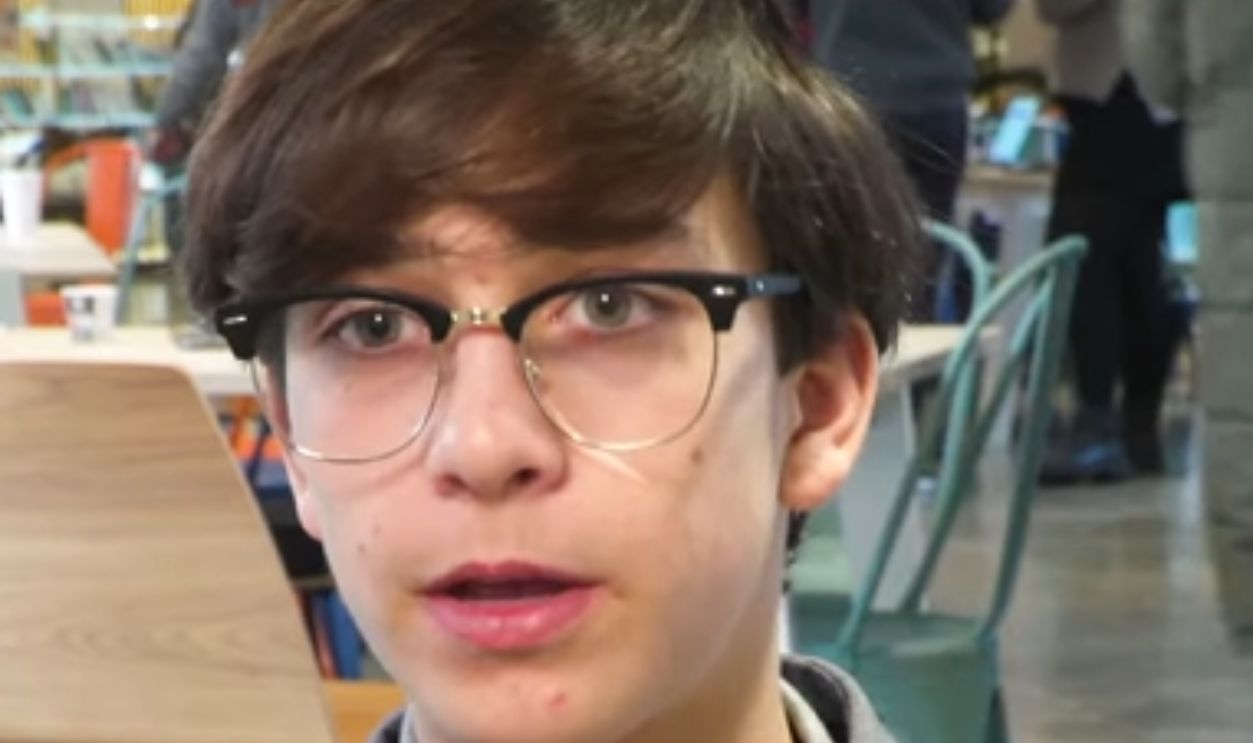 My LPF - RYAN HONARY, FOUNDERCLIMATE SOLUTIONS SOCIETY by LearningPlanet Festival
My LPF - RYAN HONARY, FOUNDERCLIMATE SOLUTIONS SOCIETY by LearningPlanet Festival
AssistiveTouch Pro Controller (Cont.)
The system also comes with innovative features like “hover control” that enable users to trigger actions without physical contact. He was 14 years old when he developed this system. It was implemented to help people with limited mobility control smartphones and tablets.
 iPhone 16/16 Pro: How to Turn On Assistive Touch On-Screen Button by App Tutor
iPhone 16/16 Pro: How to Turn On Assistive Touch On-Screen Button by App Tutor
Rescue Travois
The Rescue Travois is a collapsible, triangular device that can be easily assembled using simple instructions. Testing has shown that even children can tow it with ease. For example, a 9-year-old girl weighing 65 pounds could tow two children having a combined weight of 85 pounds.
 Bamboo Travois is easy to use by Alexis Lewis, Inventor
Bamboo Travois is easy to use by Alexis Lewis, Inventor
Rescue Travois (Cont.)
It was invented by Alexis Lewis when she was 12 years old to help transport children during crises. Lewis heard about the devastating Somali famine in 2011, when many parents faced the heartbreaking decision of leaving weaker children behind. From here, it all started.
 #STEM10: Alexis Lewis, Inventor by Amy Poehler's Smart Girls
#STEM10: Alexis Lewis, Inventor by Amy Poehler's Smart Girls
Rescue Travois (Cont.)
A platform or netting fixed on two long poles was the classic Native American travois. This served as the model for the Rescue Travois. The layout for the bamboo travois is open-source, meaning anyone can use it outside of the United States, as she holds a US patent.
 Bamboo Travois is easy to use by Alexis Lewis, Inventor
Bamboo Travois is easy to use by Alexis Lewis, Inventor
Hollow Flashlight
This flashlight operates on the principle of the thermoelectric effect. Here, Peltier tiles generate electricity when one side is heated (by the hand) while the other side remains cool. It is constructed from aluminum tubing and PVC pipe that maximizes energy conversion.
 The Hollow (Thermoelectric) Flashlight - Google Science Fair by Andini
The Hollow (Thermoelectric) Flashlight - Google Science Fair by Andini
Hollow Flashlight (Cont.)
At the age of 15, Ann Makosinski crafted this magic in 2011. She showcased her invention at the 2013 Google Science Fair. Apparently, she was motivated after hearing about students who struggled to study at night due to a lack of electricity.
Emergency Mask Pod
It all started in 2013 when this individual heard about a tragic incident where a mother had to throw her child from a window during a fire. The Emergency Mask Pod won an all-expense-paid patent application through the ePals-Smithsonian Invent It Challenge in 2014.
 #STEM10: Alexis Lewis, Inventor by Amy Poehler's Smart Girls
#STEM10: Alexis Lewis, Inventor by Amy Poehler's Smart Girls
Emergency Mask Pod (Cont.)
In order to help people trapped in fires, Alexis Lewis came up with the idea of the Emergency Mask Pod. With its smoke mask, goggles, and LED light strip, this football-shaped canister offers safety and visibility in smoke-filled areas. It contains a lightweight Xcaper smoke mask.
 #STEM10: Alexis Lewis, Inventor by Amy Poehler's Smart Girls
#STEM10: Alexis Lewis, Inventor by Amy Poehler's Smart Girls
Tethys Lead Detection Device
Most lead detection systems struggle to pick up lead at just two parts per billion. However, Gitanjali Rao's sensor steps up and gives you a warning. The key to this quick detection system is carbon nanotubes that have been coated with special chloride compounds.
 Young scientist invents device that detects lead in water by The Star
Young scientist invents device that detects lead in water by The Star
Tethys Lead Detection Device (Cont.)
In 2017, she bagged the Discovery Education 3M Young Scientist Challenge and received $25,000 for her invention. Gitanjali was motivated to develop Tethys after witnessing the devastating effects of lead contamination on communities. She began her research at the age of 11.
 Young scientist invents device that detects lead in water by The Star
Young scientist invents device that detects lead in water by The Star
JustinKase
This device is constructed from durable steel plates and connecting rods, ensuring strength and reliability during emergencies. When positioned under a door, the JustinKase locks securely against the doorjamb. It provides an additional security layer that is easily deployable.
 JustinKase Device by Melissa Martz
JustinKase Device by Melissa Martz
JustinKase (Cont.)
Its creation began in his shop class at Somerset High School in Wisconsin. Justin Rivard, then 15 years old, devised the JustinKase. He aimed to develop a device that could potentially save lives by delivering a means to secure classrooms during emergencies.
 JustinKase Device by Melissa Martz
JustinKase Device by Melissa Martz
Mosquito-Killing Robot
Now, this sounds interesting. The young David Cohen from Texas built a robot that kills immature mosquitos in their larval stage to prevent mosquito-borne illnesses like malaria. His invention was developed during the 2014 Discovery Education 3M Young Scientist Challenge.
 2014 Young Scientist Challenge Final Event: David Cohen by Young Scientist Challenge
2014 Young Scientist Challenge Final Event: David Cohen by Young Scientist Challenge
Mosquito-Killing Robot (Cont.)
It utilizes a pump-jet mechanism to reach the larvae. Then, drowns them by moving them away from the water's surface and trapping them under a mesh barrier. Cohen collaborated with his mentor, Delong Langer-Anderson, to explore practical solutions for controlling mosquito populations.
 2014 Young Scientist Challenge Final Event: David Cohen by Young Scientist Challenge
2014 Young Scientist Challenge Final Event: David Cohen by Young Scientist Challenge
Cancer-Fighting Soap
A soap that can fight cancer? Maybe. At 14, Heman Bekele made a cheap soap that might help to cure skin cancer. His invention, the Skin Cancer Treating Soap (SCTS), got him the title of America's Top Young Scientist in the 2023 3M Young Scientist Challenge.
 14-year-old Scientist Creates Soap to Treat Skin Cancer by Matter of Fact
14-year-old Scientist Creates Soap to Treat Skin Cancer by Matter of Fact
Cancer-Fighting Soap (Cont.)
Now, at age 15, he has also been named TIME's 2024 Kid of the Year. The soap contains cancer-fighting chemicals and is produced to revive dendritic cells, which are essential in fighting cancer but are often targeted and destroyed by cancer cells.
 14-year-old Scientist Creates Soap to Treat Skin Cancer by Matter of Fact
14-year-old Scientist Creates Soap to Treat Skin Cancer by Matter of Fact

